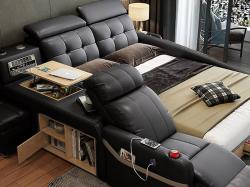Best Security System for home: Protect your loved ones
Best Security System for home: The internet of things has enabled the security of homes where you can remotely control the door locks, lights, thermostats vacuum cleaners lawnmowers, and even pet feeders, using your Smartphone and an app that controls your devices. Nowadays it is very simple to monitor homes from anywhere. Smart security systems can be customized within setups that include professional installations and monitoring.
Best Security System for home
Depending on your needs you can opt for the home security system that needs self-monitoring or a subscription fee to have vigil on your house 24*7 by professionals who can contact fire or police on your behalf if such occurrences happen. The pricing of these professionals depends on the coverage they offer. Home security systems include security cameras, video doorbells, motion sensors, and smart locks.
A smart home security system connects through Wi-Fi networks which can be controlled by a Smartphone app. Entry-level systems include some door and window sensors, a motion-sensing detector, and a hub that interconnects these devices through a network. These security features can be expanded by adding sensors to doors, motion in the house, sensors for garage door openers, indoor and outdoor surveillance cameras, lights sirens smoke detectors, water sensors, and many more.
All home security system components use the same wireless standard to communicate with the main hub, but power requirements, signal range, and size cannot compromise with one main hub. Smaller components like door window sensors use Z wave technology because they require less power and use small batteries. They can operate in a mesh topology and can extend over different networked devices. No wireless protocol provides the bandwidth that can offer smooth video streaming, moreover, Z waves are controlled by Hub while Wi-Fi devices can be controlled by an app.
Essential components of a home security system
Master Control Panel
It is the controlling hub where all the information from the central home alarm is processed. Most people who have a master control facility can monitor alarms either Do it yourself or with a professionals team who also has access to control. A battery backup is necessary if the electricity supply gets interrupted in your area.
Access Control Unit
The master control panel is wired to access the control unit, which is located near the front door so that it can be accessed while entering or leaving the house. This can be a simple numerical keypad that uses a specific code feed by you or professionals running home security systems. This can be turned on or off when alarms are set off to sense any security changes. These devices are equipped with a panic button that sounds alarmed to police, the fire departments, or emergency medical services. Modern systems are equipped with complicated digital control units allowing users to control lights, thermostats, and more. These home systems are connected to phone or tablet apps that allow you to arm or disarm the alarm from anywhere. The access control devices control burglar alarms which can be connected to a doorbell security camera.
Home Security System Cameras
Security cameras are for alarm systems through video or storage technologies. These cameras deter thieves and capture suspects' images that can be caught by police for interrogation. A remotely accessed camera lets you view what is happening in your home at any time. A doorbell installed camera running on a cloud-based device with night vision is also allowed to view through the mobile app. Ensure a high-resolution camera that can identify any suspicious persons entering your home. The camera should be installed so that the face of an intruder can be viewed easily through the camera. The position of the camera is critical to detect any wrongdoers or culprits.
Door and Window Alarms
These sensors are made of paired magnetic switches that are triggered when they become separated, which happens whenever the door or window is opened. There is some duration of a few seconds when you can trigger an alarm whenever a window or a door is opened. Though these security systems are old now they are very useful since most burglaries happen through windows or main doors.
Glass-Break Sensors
Glass breaking at a unique audio frequency is detected to trigger an alarm whenever such sound happens. These sensors are installed on windows that can detect vibrations whenever a glass breaks. This protects your home against burglars that try to enter your housebreaking the windows. These glass-break sensors have a range of 20 feet.

Motion Sensors
Motion sensors are based on Infrared energy that detects body heat and temperature. These sensors trigger alarms whenever an outsider invades in your rooms. But sometimes motion sensors can set alarms when house pets come into your rooms. It’s better to use pet immune mode that ignores animal movements of particular weight or size.
Yard Signs and Window Stickers
Burglars avoid entering those houses where the house windows or yard has a pasted sticker or sign on them. It is evidenced that a person plotting to break a home will not invade when he spots these window stickers or yard signs.
Smoke and Carbon Monoxide Detectors
Security systems may warn us for risks that break in our homes from outside but what if there some security concerns caused due to in-house activities like fire or carbon monoxide poisoning which is more fatal. So security systems are now equipped with carbon monoxide sensors if a fire breaks in your homes. These systems have sensors that sound alarms for carbon monoxide fire based on heat.
Heat, Temperature and Water Leak Sensors
Apart from heat and carbon monoxide sensors you can secure your home from natural disasters like floods wood fire or excess temperature. The heat detector sounds alarm when it senses a dramatic rise in temperature more than 15 degree Fahrenheit per minute up to 135 degrees.
Video Doorbell
Video doorbells makes easy for you to identify the person who arrives at your door, these devices connect through Wi-Fi networks and send alerts when someone approaches the main front door. They start recording video whenever someone arrives to your doorway enabled by motion sensors. These doorbells has two way communication that allows you to speak with the visitor from anywhere through your phone.
Cost of Security systems
If you opt DIY system or decide for professionally installed system, then in DIY you will have to self monitor your security system while in professionally charged security systems you might have to pay monthly charges based on features and services that you want in your security systems. Simplisafe Home security self monitored kit and Ring alarm security kit is offered with hardware and no monthly charge while its professionally monitored team charges you $14.99 per month.
Best Smart Lock
Smart locks are part of home security setup, if you own a home automation through central hub that control things like lights and thermostats, you can add a Z wave to system that are standard pre installed holes and easy to install. These can be monitored using mobile app and will send notifications when someone locks or unlocks your doors,
Home security system automation companies
Simplisafe
It is modern type of home security system, the company provides DIY (Do it yourself) models and professionally operated security systems.
The simplisafe model provides options to self operated security systems and company operated security systems but one had to pay for hardware in both the cases. The home security package starts at $229 to $489. But if you want services of professionals to take care of your house security then you would be charged around $14.99 per month and does not require a contract for the same.
Cove
Cove is new entrant in home security systems. Like Simplisafe cove provides personalized and customized home security setup. You can tell the devices you need that control your home security. You can purchase your own security systems as per your choice and set it yourself. The cove package gives you an alarm panel, door sensors, window sensors, motion detectors and more. The prices may vary depending on the hardware you choose. You can choose devices at reasonable costs like-
- Cove Touch Alarm Panel, $184.
- Door sensors, $15 each.
- Window sensors, $15 each.
- Motion detectors, $30 each.
- Glass break detectors, $35 each.
- Smoke detectors, $30 each.
- Carbon monoxide detectors, $50 each.
- Indoor cameras, $59 each.
The cove’s professionally monitored security system starts at $180 per year, or $15 per year. Cove provides quick response if you choose their professionally monitoring team.
Smart Home Security Devices
If you prefer DIY or do it yourself security system monitoring for your home security you must set up DIY of your own, where you can handle the monitoring yourself. The DIY is easy to handle and understand the system working. It is also priced reasonably. You can search different security devices that you necessarily need to safeguard your home. The security system can be affordable for you the Wyze camera costs you only $19 and a pack 4 fake cameras just to fool intruders might cost around $20. These dummy cameras are visible outside your home that gives a sense of home security devices installed in your home to intruders.
-
 Unlocking Opportunities with Health and Medical Sciences Courses
Unlocking Opportunities with Health and Medical Sciences Courses -
 Top Benefits of Pursuing An Arts Degree
Top Benefits of Pursuing An Arts Degree -
.jpg) Choosing the Right Fleet Management Software for Your Business
Choosing the Right Fleet Management Software for Your Business -
.jpg) A Guide On Choosing The Right Digital Signature Software
A Guide On Choosing The Right Digital Signature Software -
 Exploring Online Fitness Classes for a Virtual Fitness Journey
Exploring Online Fitness Classes for a Virtual Fitness Journey -
 Keeping Your System Secure with Event Log Monitoring Tools
Keeping Your System Secure with Event Log Monitoring Tools -
 Project Management Software Tools For Businesses of All Sizes
Project Management Software Tools For Businesses of All Sizes -
 How to Choose the Right Smart Bed: A Guide for Better Sleep
How to Choose the Right Smart Bed: A Guide for Better Sleep -
 Accelerate Your Career with Animation Courses
Accelerate Your Career with Animation Courses -
 Homecare Jobs With Their Opportunities, Roles And Rewards
Homecare Jobs With Their Opportunities, Roles And Rewards
Recent Post